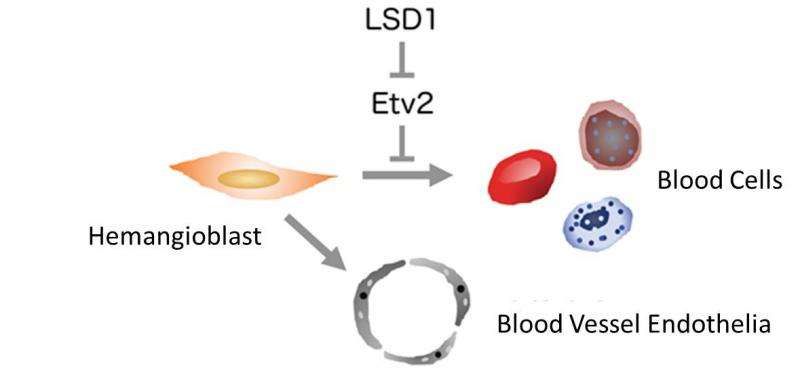Clarifying the mechanism for making blood cells

In 1917, Florence Sabin, the first female member of the US National Academy of Sciences, discovered hemangioblasts, the common precursor cells for blood cells and blood vessel endothelia. Her discovery faced a great deal of critical opinions, but by the end of the 20th century, those opinions were overcome, and the existence of hemangioblasts had at long last come to be acknowledged. In the present day, the existence of hemangioblasts has been proven not only in chicken embryos, which Sabin had studied, but in the embryos of humans, mice, and fish as well. Furthermore, it has become clear that the precursor cells are present not only during the fetal period, but also in adult organisms. However, the mechanism by which hemangioblasts differentiated into blood cells and vascular endothelia remained a mystery in many aspects.
A research group led by Lecturer Makoto Kobayashi of the University of Tsukuba Faculty of Medicine, has managed to shed light on the puzzling mechanism by which hemangioblasts become blood cells. Although hemangioblasts are the common precursor cells for blood cells and vascular endothelia that are present during the fetal period, the discovery of hemangioblasts in adult organisms has begun to garner attention from the medical world.
In the research conducted by Kobayashi's group, mutant zebrafish in which the differentiation from hemangioblasts into blood cells was inhibited were isolated, and the responsible gene was identified to be histone demethylase LSD1. Furthermore, phenotype recovery experiments involving gene knockdown clarified that the point of action of LSD1 is the gene silencing of Etv2, a transciption factor gene required for hemangioblast formation. These results show that epigenetic gene silencing of Etv2 by LSD1 is important in determining the destinies for blood cell differentiation.
This phenomenon is the epigenetic control that makes hematopoetic stem cells and vascular endothelial cells, and further development of the results of this study could lead to future medical applications.
More information: Miki Takeuchi et al. LSD1/KDM1A promotes hematopoietic commitment of hemangioblasts through downregulation of Etv2, Proceedings of the National Academy of Sciences (2015). DOI: 10.1073/pnas.1517326112
Journal information: Proceedings of the National Academy of Sciences
Provided by University of Tsukuba

















